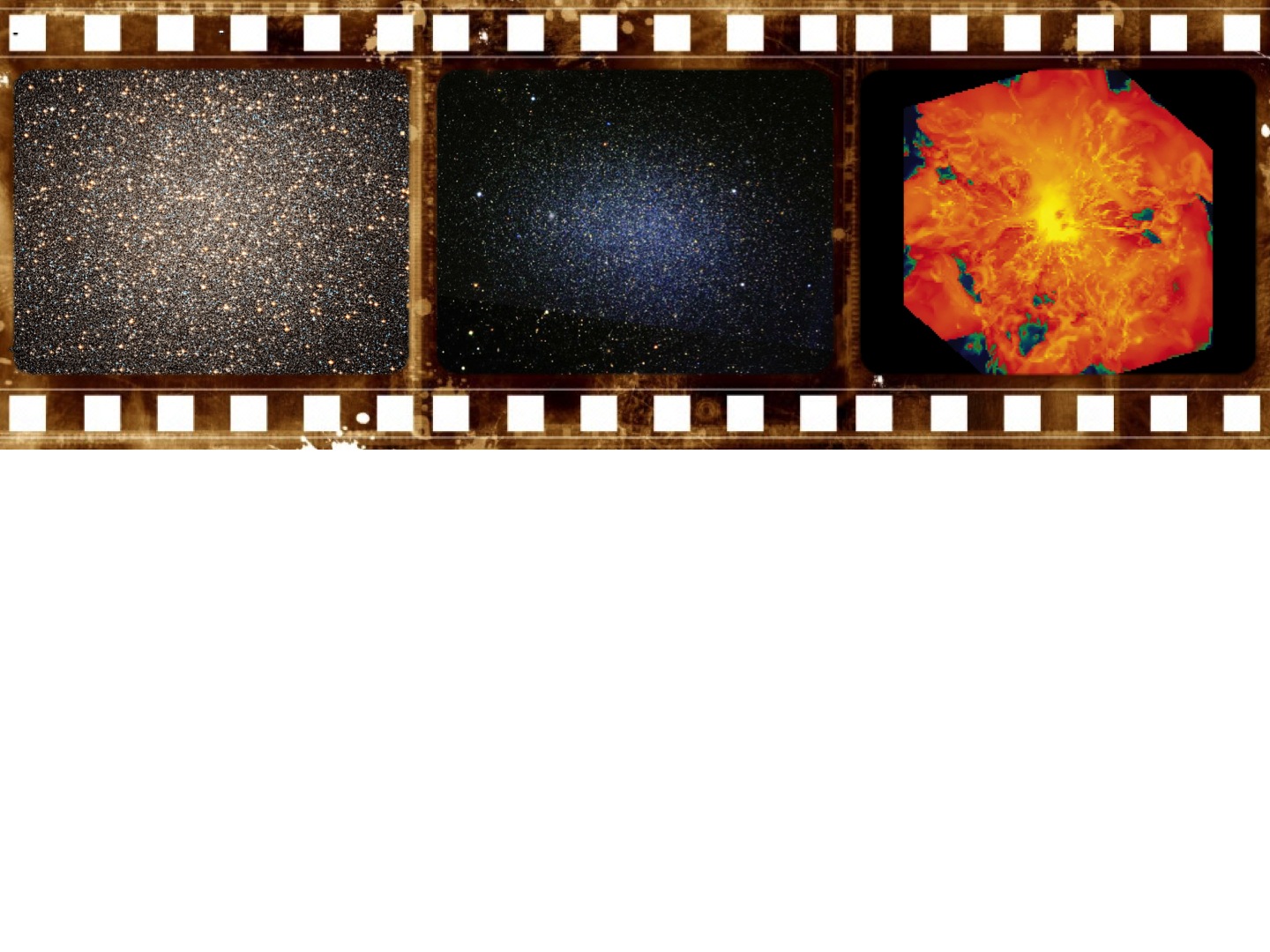The formation and evolution of galaxies is one of the great outstanding problems of astrophysics. In the currently favored ΛCDM galaxy formation paradigm smaller structures collapse first, while larger galaxies form later, with accretion events playing an important role, in particular for the build-up of stellar halos. The search for the surviving relics of such assembly processes is still open.
Because of their proximity, the Milky Way and its satellite system can be studied with exquisite detail and thus provide a unique benchmark for theories of galaxy formation and evolution. In particular, the Galactic halo is a much more lively environment than thought in the past: it seems to be formed by two distinct components (accreted and formed in situ); abundance gradients are present in the inner halo; substructures are present everywhere; its globular clusters (GCs) host multiple populations with peculiar chemical composition, indicative of a complex formation mechanism. The details of the assembly of the Milky Way from its progenitors are encoded in the 3D positions, motions and abundances of stars seen today. While such data were once available only for rather small samples and/or nearby stars, we have now entered an era in which ground-based and space-based surveys are going to secure precise chemical and kinematic data for hundred thousands of stars spread over a significant volume of the local universe.
Indeed, the ESA's Gaia satellite, launched on 19 December 2013, is collecting data that will make possible accurate 3D mapping of more than a billion stars throughout the Galaxy and its closest satellites. Precise kinematics for such a huge number of stars will be coupled with detailed chemical information obtained from ground-based large surveys, either ongoing (APOGEE-2, Gaia-ESO Survey, GALAH, LAMOST/LEGUE) or around the corner (WEAVE and 4MOST will become fully operational in early 2018 and 2020, respectively). With all these data at hand, we will have the opportunity to study the fossil remnants of the early epochs of the Galaxy evolution with unprecedented detail and to reconstruct large pieces of its early history. We will unravel the nature of the fragments out of which the halo formed, and search for their analog survivors among the smallest, ultra-faint dwarf galaxies (UFDs) found lurking around the Milky Way, and the classical dwarf spheroidal galaxies. We feel that time is ripe to build up the tools that will allow us to fully exploit the potential of the incoming huge flow of data. Our team is composed of ten1 internationally recognized experts, distributed across nine different countries, with different, complementary expertise: (i) stellar spectroscopy and derivation of chemical abundances; (ii) NLTE abundance calculations; (iii) dynamics of stellar systems; (iv) numerical simulations, chemo-dynamical and semi-analytical models; (v) surveys and data mining.
All these skills are necessary to achieve the project objectives: (i) to investigate and compare the level and significance of chemical inhomogeneities in low-metallicity systems (from the smallest UFDs to the Galactic inner and outer halo fields, through the classical dwarf spheroidals and Galactic GCs); (ii) to unravel the origin of low-metallicity stars with peculiar chemical composition (C-rich stars, low-[α/Fe] stars, second-generation stars in GCs...) found in the Local Group; (iii) to assess the role of galactic outflows in shaping the chemical properties of galaxies; (iv) to quantify and characterize the fractions of ‘accreted’ versus ‘formed in situ’ stars in the solar vicinity. Our efforts fit a more general, ambitious long-term goal: to provide a picture of the formation of the Milky Way halo and its satellites as consistent and comprehensive as possible. With the first data release from Gaia expected by mid-2016 and valuable abundance data from large spectroscopic surveys already in hand, our project is timely and has a high probability of leading to substantial scientific breakthroughs.
Click here for the full proposal.
Image credits | Left: the Galactic globular cluster Omega Centauri. NASA, ESA, and the Hubble Heritage Team (STScI/AURA). Centre: the dwarf galaxy Leo I. WikiSky snapshot based on Sloan Digital Sky Survey data. Right: the complex 3D gas density structure of a massive proto-globular cluster at t= 5 Myr (simulation and credits: Calura et al. 2015).
1 The original format —twelve Team members— has been reduced following the recommendation of the ISSI Science Committee.↩
